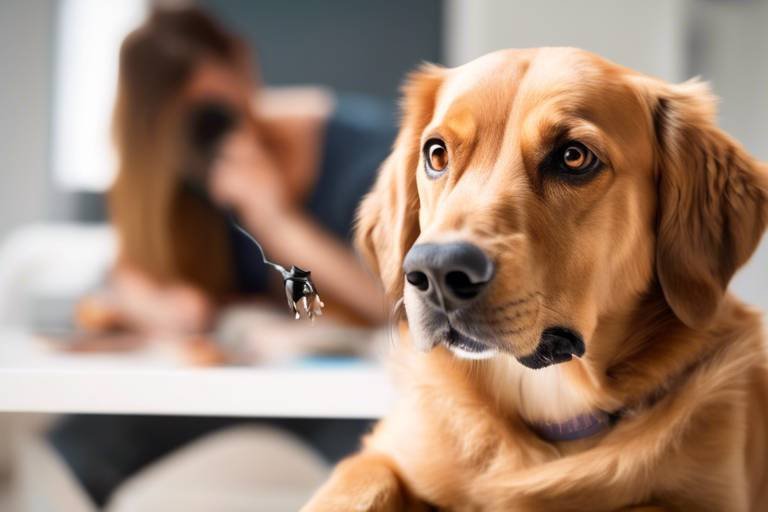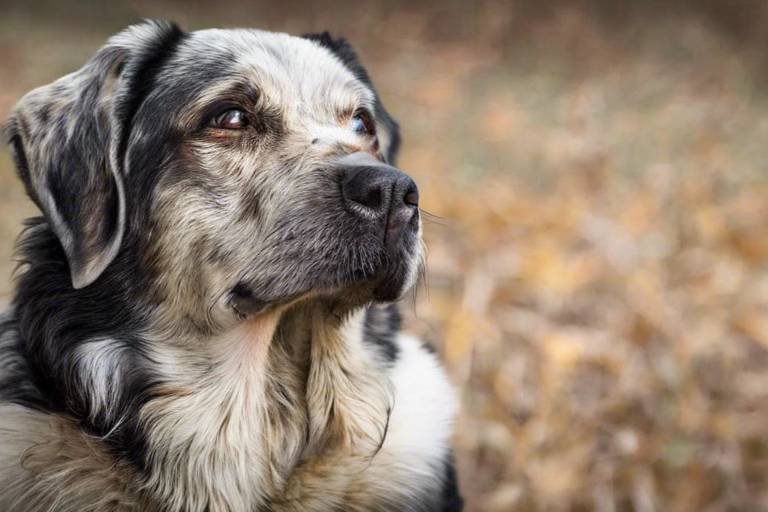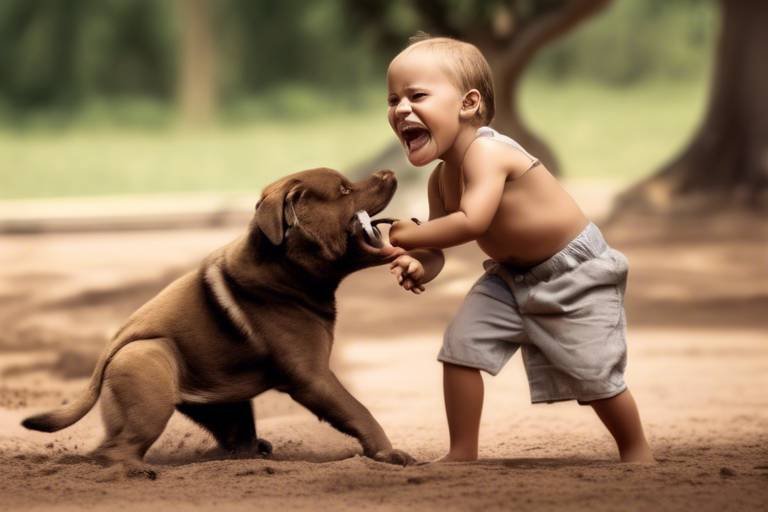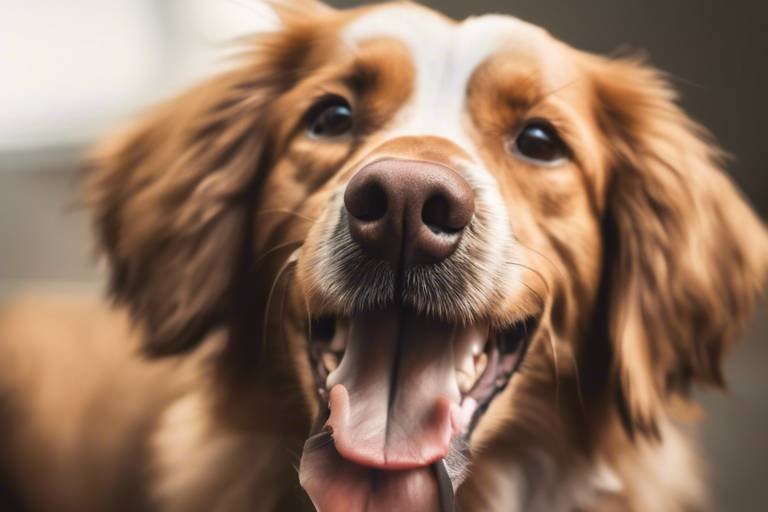How to Help Your Dog Overcome Agoraphobia
Agoraphobia in dogs is a condition that can leave them feeling trapped in their own homes, much like a person who fears open spaces. As a loving dog owner, you might find it heartbreaking to see your furry friend struggle with anxiety and fear. The good news is that there are effective strategies to help your dog overcome this debilitating condition. Just like a lighthouse guiding a ship through a storm, your support and understanding can lead your dog to calmer waters. In this article, we will explore various methods and techniques that can assist your beloved pet in reclaiming their confidence and enjoying the world outside.
Before diving into solutions, it's essential to understand what agoraphobia is and how it manifests in dogs. This anxiety disorder can be triggered by various factors, including environmental stressors, social situations, and even past traumas. Recognizing the signs—such as excessive barking, hiding, or refusal to leave the house—is the first step in addressing the issue. Imagine your dog is like a balloon filled with air; when the pressure builds too much, it can pop. Similarly, your dog needs the right tools and support to manage their anxiety without feeling overwhelmed.
Every dog is unique, and so are their triggers. Identifying what causes your dog to feel anxious is crucial in developing effective coping strategies. Triggers can range from loud noises and crowded spaces to unfamiliar people or animals. By observing your dog's behavior in different situations, you can create a clearer picture of what makes them uncomfortable. Consider keeping a journal to track these triggers, noting the circumstances and your dog's reactions. This will not only help you understand their fears but also assist in formulating a plan to address them.
Environmental factors often play a significant role in canine agoraphobia. For example, loud noises like thunderstorms or fireworks can send your dog into a panic. To help your dog cope with these triggers, it's essential to desensitize them gradually. Start by exposing them to these sounds at a low volume while providing treats and praise to create positive associations. Over time, you can increase the volume, allowing your dog to feel more comfortable with these noises. Think of it like teaching a child to swim; you wouldn’t throw them into the deep end right away, would you?
Many dogs are sensitive to loud noises. To help your dog overcome this fear, consider using white noise machines or calming music to drown out sudden sounds. You might also create a cozy den-like space where your dog can retreat during particularly noisy events. This safe haven can be a blanket fort or a quiet corner filled with their favorite toys. Just like a cozy coffee shop can be a refuge from a busy street, your dog needs a sanctuary to feel secure.
Social situations can also be a significant source of anxiety for dogs with agoraphobia. To help your dog become more comfortable around other animals and people, start with controlled introductions. You might invite a calm, friendly dog over for a playdate or take your dog to a low-key park during off-peak hours. Gradually increasing exposure to social settings can help build your dog's confidence. Remember, patience is key; just as we don't expect a toddler to master a skill overnight, your dog needs time to learn and adapt.
Understanding your dog's past experiences is vital in addressing their agoraphobia. If your dog has experienced trauma—be it abuse, abandonment, or a negative encounter with another animal—these memories can linger and manifest as anxiety. Providing a nurturing environment and consistent routines can help your dog heal from these past traumas. Think of it as planting a seed; with the right care and attention, it can grow into a beautiful flower. Be patient and supportive, allowing your dog to blossom at their own pace.
Establishing a secure and comforting environment is crucial for your dog's recovery. A safe space can be a designated area in your home where your dog feels relaxed and protected. This space should be free from stressors and filled with comforting items. Consider using soft blankets, favorite toys, and even your worn clothing to provide a sense of familiarity and security. Just like a warm hug can soothe a child, creating a cozy retreat can help your dog feel safe and loved.
Comfort items play a vital role in helping anxious dogs feel secure. Items like plush toys, blankets, or even a piece of your clothing can provide a sense of comfort. When your dog feels overwhelmed, they can retreat to their safe space and snuggle with these items. Think of it as a favorite childhood toy; it brings back fond memories and a sense of safety. Encourage your dog to use these comfort items by associating them with positive experiences, such as playtime or treats.
Designating specific areas in your home as safe zones can significantly aid your dog's recovery. These zones should be quiet, free from distractions, and filled with their favorite comfort items. You might use baby gates to create a secure area or simply allow your dog to choose their favorite spot. Just as we all have our favorite corner of the couch, your dog should have a place they can retreat to when anxiety strikes. Make these spaces inviting and encourage your dog to use them during stressful situations.
Gradual exposure is a key technique in helping dogs overcome agoraphobia. This method involves slowly introducing your dog to their triggers in a controlled manner. Start with less intimidating situations and gradually work your way up to more challenging ones. For example, if your dog is afraid of going for walks, begin by spending time outside in the yard, rewarding them for calm behavior. Over time, you can increase the distance and duration of your outings. Think of it as training for a marathon; you wouldn’t expect to run 26 miles without preparation!
Desensitization exercises are an effective way to help reduce anxiety over time. For instance, if your dog is afraid of the sound of a doorbell, play a recording of it at a low volume while providing treats and praise. Gradually increase the volume as your dog becomes more comfortable with the sound. This process can take time, but with patience and consistency, your dog will learn to associate the trigger with positive experiences. Just like a child learns to ride a bike, practice makes perfect!
Using positive reinforcement can encourage bravery in your dog. When your dog faces their fears, reward them with treats, praise, or playtime. This reinforces their progress and helps build their confidence. Imagine your dog is like a little explorer; every time they bravely venture into the unknown, they deserve a reward for their courage. Celebrate their victories, no matter how small, and watch their confidence grow.
Sometimes, professional intervention is necessary for severe cases of agoraphobia. If your dog's anxiety is overwhelming and you feel unable to manage it on your own, don't hesitate to seek help. Veterinarians and dog behaviorists can provide valuable insights and treatment options tailored to your dog's needs. Just as we consult a doctor for our health issues, your dog deserves the same level of care and attention.
Behavioral therapies can be effective in treating canine agoraphobia. These therapies often involve working with a professional to develop a customized plan for your dog. Options may include cognitive behavioral therapy (CBT) or desensitization techniques. These approaches can help your dog learn to cope with their fears in a safe and supportive environment. Think of it as a roadmap; with the right guidance, your dog can navigate their way to recovery.
In some cases, medication may be required to manage anxiety effectively. Consult with your veterinarian to discuss potential medication options and their suitability for your dog. It's essential to approach this option thoughtfully, ensuring that any treatment plan is safe and effective. Just like we sometimes need a little extra help to get through tough times, your dog may benefit from a little support as well.
Q: Can agoraphobia in dogs be cured?
A: While it may not be completely curable, many dogs can learn to manage their anxiety with the right strategies and support.
Q: How long does it take for a dog to overcome agoraphobia?
A: The timeline varies for each dog, depending on their individual triggers and the consistency of the training methods used.
Q: Should I use medication for my dog's anxiety?
A: It's best to consult with a veterinarian to determine if medication is appropriate for your dog's specific situation.
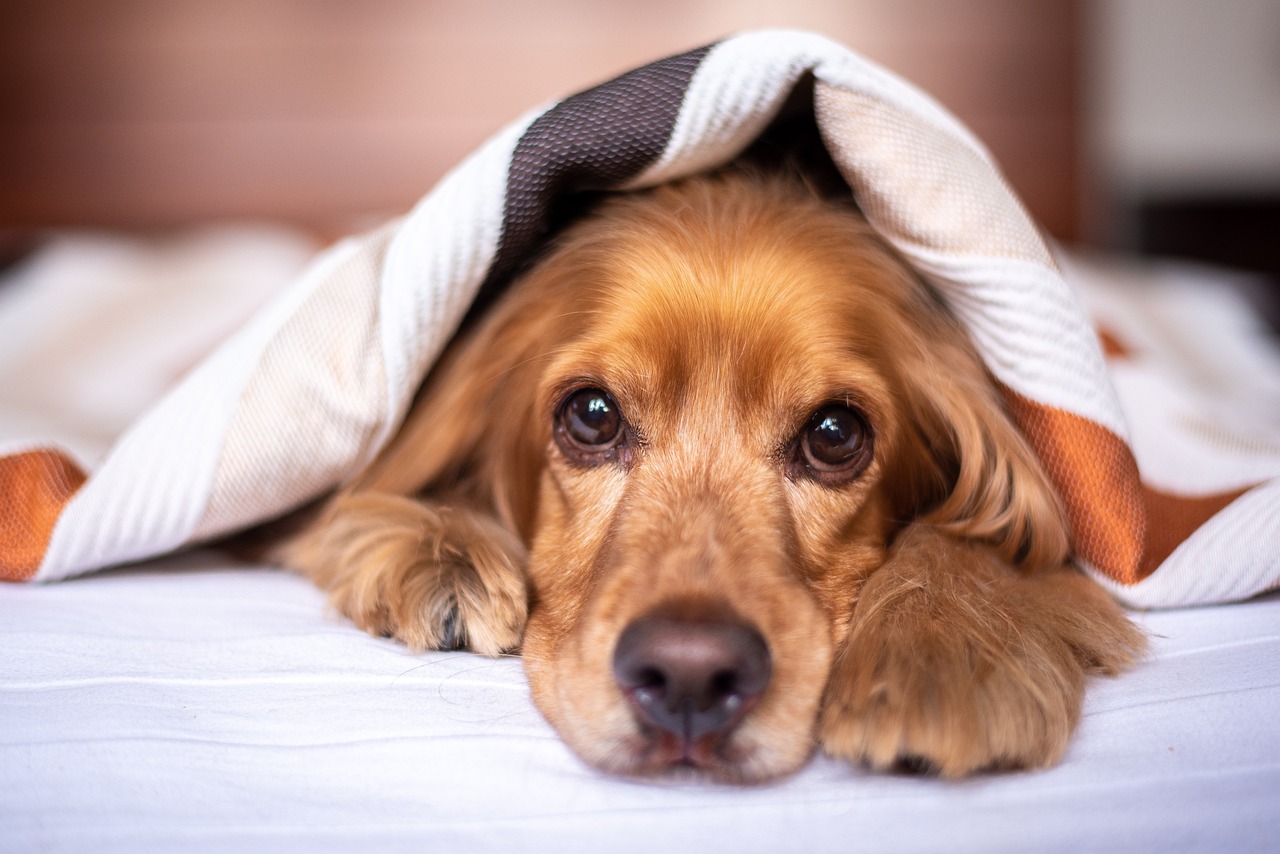
Understanding Canine Agoraphobia
Agoraphobia in dogs is a complex and often misunderstood condition that can significantly hinder a dog's quality of life. Just like humans, dogs can experience anxiety, and agoraphobia manifests as an intense fear of situations or environments that they perceive as unsafe. This fear can lead to a reluctance or outright refusal to leave the home, creating a cycle of anxiety that can be tough to break. Understanding this condition is the first step toward helping your furry friend reclaim their confidence and joy.
So, what exactly causes agoraphobia in dogs? The roots of this anxiety disorder can often be traced back to a combination of genetics, early experiences, and environmental factors. For instance, dogs that have not been properly socialized during their formative months may develop a heightened sensitivity to new environments. Similarly, traumatic experiences, such as being lost or having a negative encounter with another animal, can leave lasting scars that contribute to their fear of the outside world.
Recognizing the signs of agoraphobia is crucial for pet owners. Dogs suffering from this condition may exhibit a range of symptoms, including:
- Excessive barking or whining: This is often a sign of distress when faced with unfamiliar situations.
- Hiding or seeking refuge: Your dog may try to hide in a corner or seek comfort in small spaces.
- Refusal to walk: A dog might freeze or resist going outside, showing clear signs of fear.
- Destructive behavior: Anxiety can lead to chewing or scratching at doors and windows.
It's important to note that agoraphobia can vary in severity among dogs. Some may only feel anxious in specific situations, while others may experience overwhelming fear in almost any outdoor setting. Understanding the nuances of your dog's behavior can help you tailor your approach to their unique needs.
In summary, canine agoraphobia is a serious condition that can affect your dog's well-being and your shared experiences. By recognizing the signs and understanding the underlying causes, you can take the first steps toward helping your furry companion overcome their fears. Remember, patience and compassion are key in this journey, as you work together to create a more confident and comfortable environment for your beloved pet.

Identifying Triggers
When it comes to helping your furry friend with agoraphobia, one of the most crucial steps is identifying their triggers. Just like humans, dogs can have specific situations or stimuli that send them into a tailspin of anxiety. Understanding these triggers is essential for creating effective coping strategies that will help your dog feel more secure in their environment. But how do you pinpoint these triggers? It often requires a little detective work!
Start by observing your dog’s behavior in various settings. Do they seem particularly anxious during certain times of day, or when specific noises occur? Keeping a journal can be incredibly helpful. Documenting your dog’s reactions to different environments, sounds, and social interactions will help you identify patterns. Look for signs such as:
- Excessive barking or whining
- Hiding or seeking refuge in designated safe areas
- Shaking or cowering
- Pacing or restlessness
It’s also important to consider the environmental triggers that might be affecting your dog. For instance, loud noises like thunder or fireworks can be particularly distressing. If you notice your dog becoming anxious during these events, it’s a clear sign that noise sensitivity is a trigger. Similarly, social interactions can be a source of anxiety. If your dog reacts negatively to other animals or strangers, this could indicate a need for gradual exposure to social situations.
To delve deeper, let’s take a look at some common environmental triggers that may be contributing to your dog's agoraphobia:
| Trigger Type | Description |
|---|---|
| Noise Sensitivity | Responses to loud sounds such as thunderstorms, fireworks, or even construction noise. |
| Visual Stimuli | Unfamiliar sights, like moving vehicles or other animals, that may cause fear. |
| Social Interactions | Encounters with other dogs or people that lead to fear or aggression. |
While these triggers can vary from dog to dog, it’s essential to remember that past traumas can play a significant role in shaping your dog’s reactions. If your dog has had a negative experience, such as being attacked by another dog, they may develop a fear of similar situations. This is where understanding your dog’s history becomes invaluable.
By identifying and acknowledging these triggers, you can create a tailored approach to help your dog feel more at ease. Gradually exposing them to these stimuli in a controlled manner, while providing reassurance and support, can make a huge difference in their recovery. Just like a child learning to ride a bike, your dog will need time, patience, and positive reinforcement to build their confidence and overcome their fears.
Q: How long does it take for a dog to overcome agoraphobia?
A: The time it takes varies greatly depending on the individual dog and the severity of their agoraphobia. Consistent training and support can lead to improvements over weeks or months.
Q: Can I help my dog alone, or should I seek professional help?
A: While many owners can successfully help their dogs, severe cases of agoraphobia may require professional intervention. Consulting a veterinarian or a dog behaviorist can provide additional strategies and support.
Q: Are there any specific breeds more prone to agoraphobia?
A: Any breed can develop agoraphobia, but some breeds are more sensitive than others. Breeds that have a history of anxiety may be more susceptible.
Common Environmental Triggers
When it comes to understanding your dog's agoraphobia, it's essential to recognize the environmental triggers that can provoke their anxiety. These triggers can be anything from loud noises to sudden movements, and they often create a sense of fear that can be overwhelming for your furry friend. Imagine walking into a crowded room filled with loud chatter and sudden bursts of laughter; for a dog with agoraphobia, this can feel like an insurmountable challenge.
One common environmental trigger is noise sensitivity. Many dogs are particularly sensitive to loud sounds such as thunderstorms, fireworks, or even the vacuum cleaner. These noises can send them into a panic, causing behaviors like hiding, barking, or even destructive tendencies. It's crucial to observe your dog’s reactions to various sounds to better understand their specific triggers. For instance, if your dog hides under the bed during a storm, it's a clear sign that they associate that noise with fear.
Another significant trigger can be social interactions. Dogs that have had negative experiences with other animals or people may become anxious in social settings. Picture this: your dog is at the park, but instead of enjoying the fresh air, they are fixated on every passerby, tail tucked and body tense. This hyper-vigilance can stem from past traumas or simply a lack of socialization. Gradually introducing your dog to controlled social environments can help them learn that not all interactions are threats.
Additionally, certain environmental factors like unfamiliar places or even specific scents can trigger anxiety. For example, if you frequently change your route on walks or visit new locations, your dog may feel uneasy. This discomfort can be compounded if they encounter strong scents that remind them of negative experiences. To mitigate this, try to maintain a consistent routine and introduce new places slowly, allowing your dog to adjust at their own pace.
To summarize, recognizing and understanding these common environmental triggers is a crucial step in helping your dog overcome agoraphobia. By being aware of their sensitivities and taking proactive measures, you can create a more comfortable environment for your furry companion. Remember, every dog is unique, so take the time to observe and understand what specifically triggers your dog's anxiety. With patience and care, you can help them navigate their fears and enjoy a more fulfilling life.
- What are the signs that my dog has agoraphobia? Look for signs such as excessive barking, hiding, or refusal to go outside.
- Can agoraphobia be treated without medication? Yes, many dogs can benefit from behavioral therapies and gradual exposure techniques.
- How long does it take for a dog to overcome agoraphobia? The duration varies depending on the dog and the severity of their anxiety, but consistent training can lead to improvement.
- Should I consult a professional for my dog's anxiety? If your dog's anxiety is severe or doesn't improve with home techniques, seeking professional help is advised.
Noise Sensitivity
Noise sensitivity is a common issue among dogs, particularly those suffering from agoraphobia. Just like some humans are terrified of thunderstorms or loud concerts, many dogs experience intense anxiety when exposed to sudden or loud sounds. These noises can range from the crack of thunder to the roar of fireworks, or even the mundane sounds of everyday life like vacuum cleaners and sirens. Imagine feeling like the world is exploding around you without any warning; that's what your dog might be experiencing. It’s crucial to recognize that this isn’t just a behavioral quirk; it’s a genuine fear that can significantly affect their well-being.
To help your furry friend cope with noise sensitivity, desensitization is key. This technique involves gradually exposing your dog to the sounds that trigger their anxiety in a controlled manner. For example, you might start by playing a recording of a thunderstorm at a very low volume while engaging your dog in a fun activity, like playing with their favorite toy or enjoying a tasty treat. Over time, you can slowly increase the volume, allowing your dog to associate the noise with positive experiences. This method can transform a terrifying noise into something more manageable.
Here are some effective strategies you can employ to help your dog overcome noise sensitivity:
- Safe Spaces: Create a designated area in your home where your dog can retreat during loud noises. This could be a cozy corner with their bed, blankets, and favorite toys.
- Calming Products: Consider using calming aids like anxiety wraps or pheromone diffusers. These products can provide a soothing effect and help your dog feel more secure.
- Distraction Techniques: During particularly noisy events, distract your dog with engaging activities, such as puzzle toys or interactive games, to keep their mind off the sounds.
Additionally, it’s important to remain calm and composed yourself. Dogs are incredibly perceptive and can pick up on their owner's anxiety. If you react nervously to loud noises, your dog may interpret that as a signal to be afraid. Instead, try to stay relaxed and offer gentle reassurance. Your confidence can help them feel more secure.
Ultimately, helping your dog cope with noise sensitivity takes time and patience. But with consistent effort and understanding, you can help your furry companion feel more at ease in a world that can sometimes be overwhelming. Remember, every little step counts, and your support is invaluable in their journey toward overcoming their fears.
Q: How long does it take for a dog to overcome noise sensitivity?
A: The time it takes can vary greatly depending on the individual dog and the severity of their anxiety. Some dogs may show improvement in a few weeks, while others may take several months. Consistency and patience are key.
Q: Can I use medication to help my dog with noise sensitivity?
A: Yes, in some cases, medication may be recommended by your veterinarian to help manage your dog's anxiety. It's important to consult with a professional before starting any medication.
Q: Are there specific breeds more prone to noise sensitivity?
A: While any dog can develop noise sensitivity, certain breeds, particularly those known for their high energy and sensitivity, may be more susceptible. Breeds like Border Collies and German Shepherds can often exhibit heightened reactions to loud noises.
Social Interactions
When it comes to our furry friends, social interactions can be a double-edged sword. For dogs suffering from agoraphobia, the thought of encountering other animals or people can trigger intense anxiety. Just like humans, dogs thrive on companionship, but when that companionship becomes a source of stress, it can lead to a vicious cycle of fear and avoidance. Understanding how to help your dog navigate these social situations is crucial for their emotional well-being.
Imagine your dog as a shy child at a playground, overwhelmed by the sounds, sights, and interactions swirling around them. They want to join in, but the fear of the unknown holds them back. This is the reality for many dogs with agoraphobia. It’s essential to approach social interactions with patience and care, allowing your dog to build confidence at their own pace.
One effective way to help your dog with social interactions is through controlled exposure. This means gradually introducing them to new environments and social situations in a way that feels safe and manageable. Start small; perhaps invite a calm, friendly dog over to your home or meet a trusted friend with a dog in a quiet park. The goal here is to create positive associations with these interactions. You could also consider the following:
- Short Visits: Keep initial interactions brief to avoid overwhelming your dog.
- Positive Reinforcement: Use treats and praise to reward your dog for calm behavior during social encounters.
- Gradual Increase: Slowly increase the duration and intensity of these interactions as your dog becomes more comfortable.
Additionally, it's important to recognize the signs of stress in your dog. If they begin to exhibit anxious behaviors, such as whining, panting, or attempting to hide, it’s a signal to take a step back. Providing a safe space where they can retreat if they feel overwhelmed is essential. Remember, the goal is to help your dog feel secure and confident, not to force them into situations that may cause distress.
Another great strategy is to engage in playdates with well-socialized dogs. Choose dogs that are known to be calm and gentle, as their demeanor can have a soothing effect on your anxious pup. The more positive experiences your dog has with social interactions, the more their confidence will grow. Think of it as building a bridge—each positive encounter strengthens that bridge, making it easier for your dog to cross over to a more confident and social self.
Lastly, consider enrolling your dog in a training class designed for anxious dogs. These classes often provide a controlled environment where your dog can learn to interact with others while under the guidance of a professional trainer. The structured setting can help your dog learn social skills in a safe and supportive atmosphere.
In summary, helping your dog navigate social interactions requires a blend of patience, understanding, and gradual exposure. With your support, your dog can learn to face their fears and enjoy the companionship of others, ultimately enhancing their quality of life.
Q: How can I tell if my dog is anxious during social interactions?
A: Look for signs such as panting, whining, avoiding eye contact, or trying to hide. If your dog shows these behaviors, it may be best to remove them from the situation and provide comfort.
Q: What should I do if my dog reacts aggressively to other dogs or people?
A: It's important to consult with a professional dog trainer or behaviorist who can help assess the situation and provide tailored strategies to manage aggressive behavior.
Q: Is it okay to use treats during socialization?
A: Absolutely! Treats can be a powerful tool for positive reinforcement, helping your dog associate social interactions with good experiences.
Q: How long does it take for a dog to overcome agoraphobia?
A: Every dog is different. Some may show improvement in a few weeks, while others may take months. Consistency and patience are key.
Past Traumas
Understanding how past experiences shape your dog's behavior is essential when addressing agoraphobia. Just like humans, dogs can carry emotional scars from traumatic events, which can manifest as anxiety or fear in specific situations. For instance, a dog that was once frightened by a loud noise, like a thunderstorm or fireworks, may develop a lasting fear of similar sounds or even the outdoors itself. The impact of these past traumas can significantly influence your dog's behavior, making it crucial to approach their recovery with empathy and patience.
It's important to recognize that not all dogs respond the same way to trauma. Some may become overly anxious and fearful, while others might react with aggression or avoidance. Each dog's response is unique, often influenced by their breed, temperament, and previous experiences. To help your dog heal, you must first identify the specific traumas that may be contributing to their agoraphobia. This can include:
- Negative experiences with unfamiliar environments
- Past abuse or neglect
- Separation anxiety from previous owners
- Traumatic encounters with other animals or people
Once you have pinpointed the potential sources of your dog's anxiety, you can begin to implement strategies to help them heal. This may involve creating a safe and nurturing environment at home where your dog feels secure. Additionally, consider using positive reinforcement techniques to reward your dog for brave behavior, even if it's just a small step towards facing their fears. For example, if your dog is afraid of going outside, start by encouraging them to step just outside the door, rewarding them with treats and praise for their courage.
Moreover, patience is key. Healing from trauma is a gradual process, and pushing your dog too quickly can lead to setbacks. Always monitor their reactions and adjust your approach accordingly. If you notice signs of distress, it may be best to take a step back and allow your dog more time to acclimate. Remember, your dog is looking to you for guidance, and your calm demeanor can help them feel more secure.
In some cases, seeking the help of a professional dog behaviorist can be beneficial. These experts can provide tailored strategies and support to help your dog work through their challenges. They can also assist in identifying deeper issues related to your dog's past that you may not have noticed.
Ultimately, by understanding and addressing the impact of past traumas, you can help your dog regain confidence and feel safe in their environment. With time, love, and the right strategies, your furry friend can learn to overcome their fears and enjoy a fulfilling life alongside you.
Q1: How can I tell if my dog has experienced trauma?
A1: Signs of trauma can include excessive barking, cowering, aggression, or avoidance behaviors. If your dog shows signs of anxiety in specific situations, it may be linked to past experiences.
Q2: What should I do if my dog becomes aggressive when scared?
A2: It's crucial to avoid punishing aggressive behavior, as it can worsen anxiety. Instead, consult a professional dog trainer or behaviorist who can help you manage your dog's fear in a constructive way.
Q3: How long does it take for a dog to recover from trauma?
A3: Recovery time varies widely depending on the dog and the severity of the trauma. Some dogs may show improvement within weeks, while others may take months or longer. Consistent support and patience are key.
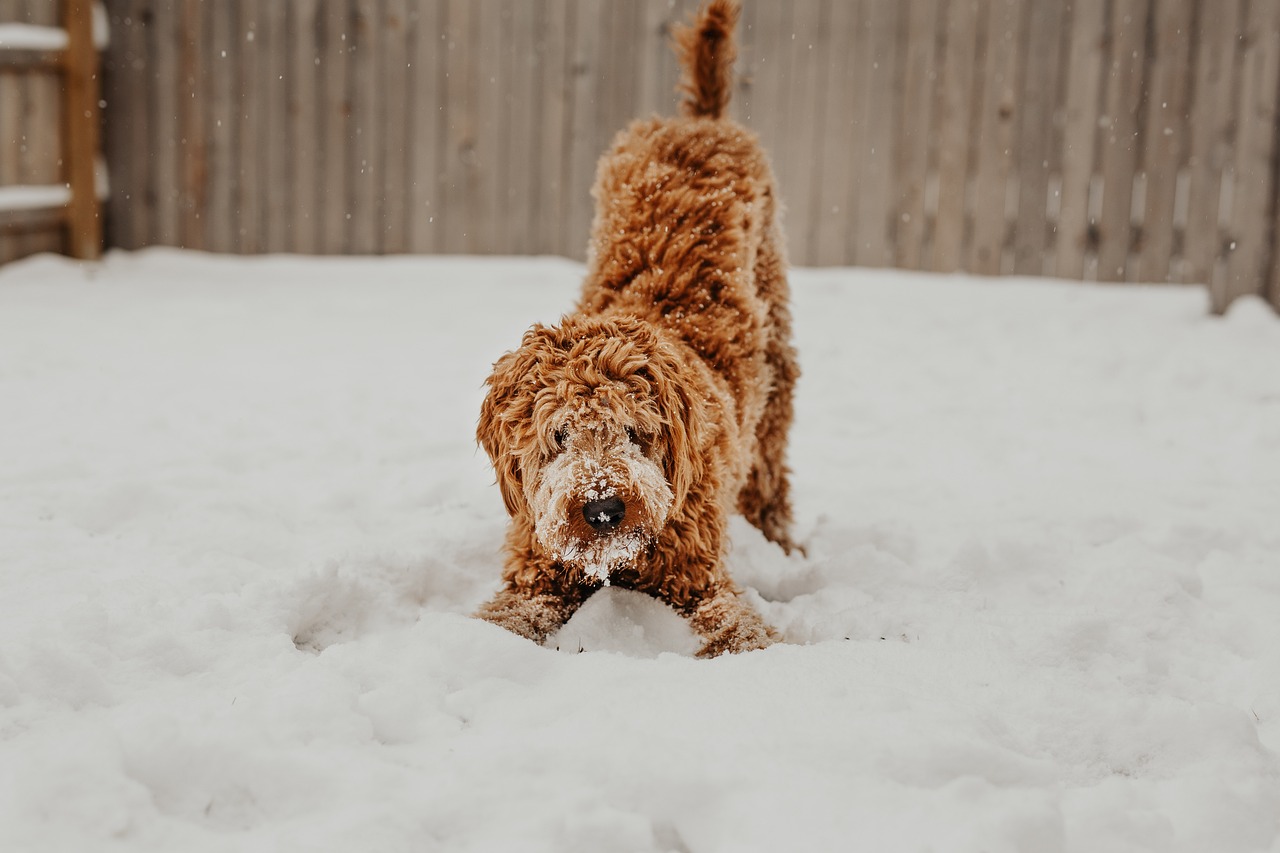
Creating a Safe Space
Creating a safe space for your dog is a fundamental step in helping them overcome agoraphobia. Just like humans, dogs need a sanctuary where they can retreat to feel secure and relaxed. Think of this space as a cozy den, a spot that feels like home, where they can recharge and escape the stresses of the outside world. This safe haven should be easily accessible, allowing your furry friend to retreat whenever they feel overwhelmed.
To start, choose a location in your home that is quiet and away from the hustle and bustle of daily life. This could be a corner of your living room, a cozy nook in your bedroom, or even a dedicated room if space allows. The goal is to minimize distractions and create an environment that feels safe. You can enhance this space with a few simple yet effective elements. For instance, consider adding:
- Comfortable bedding: A soft bed or a pile of blankets can create a warm and inviting area for your dog to rest.
- Familiar scents: Incorporating your dog's favorite toys or items that smell like you can provide a sense of security.
- Calming music or sounds: Soft background music or white noise can help mask unsettling noises from outside, promoting relaxation.
Additionally, you might want to designate certain areas within the safe space as 'safe zones'. These zones can be marked by using barriers, such as baby gates or pet pens, which can help your dog understand that these areas are their personal retreats. When they feel anxious, they can go to these zones and know that they are safe. It's essential to encourage your dog to use these areas by rewarding them with treats and praise when they do so.
Moreover, consider incorporating comfort items that can help soothe your dog during moments of anxiety. Items such as weighted blankets or anxiety wraps can provide gentle pressure, mimicking the feeling of being held. These can be particularly beneficial during stressful situations like thunderstorms or loud celebrations. By providing these comforting tools, you are actively participating in your dog's journey toward overcoming their fears.
Lastly, remember that this safe space should evolve as your dog progresses. As they become more comfortable and confident, you can gradually introduce them to new areas of your home. The key is to ensure that your dog always has a reliable retreat where they can feel safe and loved, regardless of the challenges they face outside. By fostering this environment, you are not just helping your dog cope with agoraphobia; you are also strengthening the bond between you and your furry companion.
Q1: How long does it take for a dog to feel comfortable in their safe space?
A1: The time it takes for a dog to feel comfortable varies. Some dogs may adapt quickly, while others may need weeks or even months to fully embrace their safe space. Patience is key!
Q2: Can I use essential oils to help calm my dog in their safe space?
A2: Yes, certain essential oils like lavender can promote relaxation. However, always consult with your veterinarian before using them, as some oils can be harmful to pets.
Q3: Should I force my dog to stay in their safe space?
A3: No, forcing your dog can create more anxiety. Instead, encourage them to use the space on their own terms by making it inviting and rewarding their use of it.
Comfort Items
When it comes to helping your dog overcome agoraphobia, play a pivotal role in creating a sense of security and calm. Just like a child clings to their favorite teddy bear during a thunderstorm, dogs too can find solace in familiar objects. These items can range from soft blankets to their beloved toys, and incorporating them into your dog's environment can significantly enhance their emotional well-being.
One of the most effective comfort items is a weighted blanket. Many dogs find the gentle pressure of a weighted blanket soothing, as it mimics the feeling of being held. This can help reduce anxiety and promote relaxation, especially during stressful situations like loud noises or unfamiliar environments. Additionally, you might consider providing a snuggle toy—a plush toy that your dog can nuzzle against or carry around, offering a sense of companionship.
Another essential comfort item is a safe haven bed. This is not just any dog bed; it should be a cozy, enclosed space where your dog can retreat when they feel overwhelmed. Think of it as their personal sanctuary. You can enhance this space with items that carry your scent, such as an old shirt or a piece of your clothing, which can provide additional comfort and reassurance.
Furthermore, calming sprays or diffusers infused with natural ingredients like lavender or chamomile can also be beneficial. These scents can create a tranquil atmosphere, helping to ease your dog's anxiety. You can set up a small corner in your home with these comfort items, creating an inviting space that encourages relaxation.
It's also important to regularly rotate these comfort items to keep your dog's environment stimulating yet familiar. Dogs are creatures of habit, and having a variety of comfort items can prevent them from becoming too reliant on a single object. In this way, you can maintain their interest and ensure they feel safe and secure.
In summary, comfort items are not just luxuries; they are essential tools in your dog's journey to overcoming agoraphobia. By providing a mix of soothing, familiar, and secure items, you can help your furry friend feel more at ease in their surroundings. Remember, the goal is to create an environment where your dog can thrive and gradually face their fears with confidence.
- What are the best comfort items for dogs with agoraphobia?
Some of the best comfort items include weighted blankets, snuggle toys, safe haven beds, and calming sprays or diffusers. Each of these items can help create a soothing environment for your dog.
- How can I tell if my dog is benefiting from comfort items?
Look for signs of relaxation, such as your dog resting more comfortably, seeking out their comfort items during stressful times, or displaying less anxiety when exposed to triggers.
- Can I use my old clothes as comfort items for my dog?
Absolutely! Items that carry your scent can provide additional comfort and reassurance to your dog, making them feel more secure.
Safe Zones
Creating in your home is a crucial step in helping your dog combat agoraphobia. Think of these zones as little sanctuaries where your furry friend can retreat when the world feels overwhelming. Just like we all need a cozy corner to unwind after a hectic day, dogs benefit immensely from having their own safe spaces. But how do you go about establishing these zones? It’s simpler than you might think!
First, identify a quiet area in your home that is away from the hustle and bustle of daily life. This could be a specific room or a cozy nook in your living room. Ensure this space is comfortable and free from distractions. You might want to use items like dog beds, blankets, or even a pet crate to create a snug environment. The goal is to make this area feel inviting and secure, so your dog associates it with comfort and safety.
Next, consider the layout of the safe zone. It should be easily accessible for your dog, allowing them to retreat there whenever they feel anxious. You can also enhance the space with comfort items that hold sentimental value, such as a favorite toy or a piece of your clothing. These familiar scents can have a soothing effect, helping your dog feel more at ease.
It's also essential to maintain a calm atmosphere in the safe zone. Avoid loud noises or sudden movements around this area, as these can trigger anxiety. You might even play soft music or use a white noise machine to drown out any external disturbances. By creating a peaceful environment, you’re encouraging your dog to use this space as a refuge.
To reinforce the idea of the safe zone, consider incorporating some positive experiences. Spend time with your dog in this area, offering treats or engaging in gentle play. This not only builds a positive association but also encourages your dog to see this space as a place of solace. Over time, as your dog learns to trust this safe zone, they will likely feel more secure and less anxious when faced with the outside world.
In summary, establishing a safe zone is about creating a nurturing environment tailored to your dog's needs. It’s a small but powerful step in the journey to help them overcome agoraphobia, ultimately leading to a happier and more confident canine companion.
- What should I include in my dog's safe zone?
Your dog's safe zone should include a comfortable bed or blanket, favorite toys, and items that carry a familiar scent. Ensuring the area is quiet and free from distractions is also important.
- How can I encourage my dog to use the safe zone?
Spend quality time in the safe zone with your dog. Use treats and gentle play to create positive experiences, helping your dog associate the area with comfort and safety.
- Can I create multiple safe zones?
Yes, you can create multiple safe zones throughout your home. This can give your dog options and allow them to choose the space where they feel most comfortable.

Gradual Exposure Techniques
When it comes to helping your furry friend conquer their agoraphobia, can be a game-changer. Just like a child learning to swim, your dog needs to ease into the water rather than being thrown in headfirst. This approach allows them to face their fears in a controlled and supportive environment, which can significantly reduce their anxiety over time. The key is to take small steps and celebrate each victory along the way.
To start, you’ll want to identify the specific triggers that cause your dog to feel anxious. This could be anything from the sound of a car engine to the sight of a large dog in the park. Once you've pinpointed these triggers, you can begin to introduce them slowly. For example, if your dog is afraid of loud noises, you might start by playing recordings of those sounds at a very low volume. Gradually increase the volume as your dog becomes more comfortable. This process, known as desensitization, helps your dog associate the previously frightening stimuli with positive experiences.
Incorporating positive reinforcement is also crucial during this process. Whenever your dog shows even a hint of bravery, reward them with treats, praise, or playtime. This not only encourages them to face their fears but also strengthens your bond. Remember, patience is key! Each dog will progress at their own pace, so avoid rushing the process. If your dog seems overwhelmed at any point, it’s perfectly fine to take a step back and give them some time to regroup.
Here’s a simple table outlining a basic gradual exposure plan:
| Trigger | Step 1 | Step 2 | Step 3 |
|---|---|---|---|
| Loud Noises | Play sound at low volume | Increase volume gradually | Play sound in different environments |
| Other Dogs | Observe from a distance | Short, controlled introductions | Play with friendly dogs in a safe space |
| Strange People | Introduce through a barrier (e.g., fence) | Short visits with treats | Walks in busy areas with treats |
By following a structured plan like this, you can help your dog gradually become more comfortable with their fears. Remember, the goal is to create a safe and encouraging atmosphere where your dog feels supported. Progress may be slow, but every small step counts! Celebrate those milestones, and soon enough, you’ll see your dog’s confidence blossom.
As you embark on this journey, keep in mind that professional guidance can also be beneficial. If you find that your dog is struggling despite your best efforts, consider seeking help from a behaviorist who specializes in canine anxiety. They can provide tailored strategies and support to ensure your dog’s success.
- How long does it take for my dog to overcome agoraphobia? - The timeline varies for each dog. Some may show improvement in weeks, while others might take months. Consistency and patience are essential.
- Can I use medication alongside gradual exposure? - Yes, medication can be beneficial in severe cases. Always consult your veterinarian to determine the best approach for your dog.
- What should I do if my dog has a setback? - Setbacks are normal. Return to previous steps in the exposure process and allow your dog to regain confidence before moving forward.
Desensitization Exercises
Desensitization exercises are a powerful tool in the journey to help your dog overcome agoraphobia. Imagine your dog as a brave explorer, standing at the edge of a vast, intimidating world. Each desensitization exercise is like a stepping stone, guiding them gently into the unknown while ensuring they feel safe and supported. The goal here is to expose your dog to their specific triggers in a controlled and gradual manner, allowing them to build confidence without feeling overwhelmed.
To begin, it’s essential to identify what specifically causes your dog anxiety. This could range from loud noises, such as thunderstorms, to crowded areas or even specific objects like bicycles. Once you pinpoint these triggers, you can start with exercises that introduce these stimuli at a distance or in a less intense form. For example, if your dog is afraid of loud noises, you could start by playing a recording of the sound at a very low volume while providing treats and praise. Over time, you can gradually increase the volume as your dog becomes more comfortable.
Here’s a simple framework to structure your desensitization exercises:
| Step | Action | Goal |
|---|---|---|
| 1 | Identify Trigger | Understand what causes anxiety. |
| 2 | Introduce Stimulus at Low Intensity | Familiarize your dog without overwhelming them. |
| 3 | Gradually Increase Intensity | Build confidence as comfort grows. |
| 4 | Use Positive Reinforcement | Encourage bravery with treats and praise. |
It's crucial to monitor your dog’s reactions during these exercises. If they show signs of distress, it’s a signal to dial back the intensity. Remember, patience is key. Just like humans, dogs need time to adapt to new experiences. Celebrate small victories along the way; each step forward is a significant achievement!
Incorporating desensitization exercises into your daily routine can make a world of difference. For instance, if your dog struggles with social interactions, consider arranging controlled meet-ups with calm, friendly dogs. Start with a distance that feels comfortable for your dog and gradually decrease that space as they become more relaxed. This approach not only helps them face their fears but also fosters social skills that are vital for their overall well-being.
In conclusion, desensitization exercises are not just about facing fears; they are about building a bond of trust between you and your dog. Each successful exposure can strengthen this bond and help your furry friend feel more secure in their environment. So, take a deep breath, grab those treats, and embark on this journey together!
- How long does it take for desensitization exercises to work? The timeline varies for each dog. Some may show improvement in weeks, while others might take months. Consistency is crucial.
- Can I do desensitization exercises on my own? Yes, many owners successfully implement these exercises at home. However, consulting a professional can provide additional guidance tailored to your dog's needs.
- What if my dog doesn’t respond to desensitization? If your dog shows little progress, it may be beneficial to seek help from a veterinarian or a dog behaviorist who can offer specialized strategies.
Positive Reinforcement
When it comes to helping your dog overcome agoraphobia, is one of the most effective tools in your training arsenal. This method is all about rewarding your dog for displaying desirable behaviors, which can significantly boost their confidence and reduce anxiety. Imagine your dog as a little sponge, soaking up all the love and encouragement you provide. By showering them with praise, treats, or their favorite toys when they face their fears, you're not just helping them cope; you're also building a stronger bond between the two of you.
Consider this: every time your dog successfully navigates a trigger—be it a loud noise or a crowded park—it's a victory worth celebrating! By using treats as a reward, you can create a positive association with these previously frightening situations. For instance, if your dog remains calm during a thunderstorm, offer them a tasty treat or a belly rub. Over time, they'll start to associate storms with good things, which can help diminish their fear.
To effectively implement positive reinforcement, it's essential to be consistent. Here are some tips to keep in mind:
- Timing is Key: Reward your dog immediately after they display the desired behavior. This helps them make the connection between the action and the reward.
- Start Small: Begin with less intimidating situations and gradually increase the challenge as your dog becomes more comfortable.
- Mix It Up: Use a variety of rewards—treats, toys, or praise—to keep your dog engaged and motivated.
Moreover, don’t underestimate the power of your voice. A cheerful tone can work wonders! When your dog shows bravery, let them know how proud you are. This not only reinforces their positive behavior but also encourages them to keep trying. Think of your voice as a warm hug; it provides comfort and reassurance in uncertain times.
In some cases, you might notice that your dog is hesitant to take treats or respond to praise. This can happen during particularly stressful moments. If that’s the case, try using their favorite toy instead. Sometimes, the allure of play can be more motivating than food. The key is to find what works best for your furry friend and stick with it.
As your dog progresses, it’s crucial to celebrate their achievements, no matter how small. Every step forward is a victory worth acknowledging. This not only boosts their confidence but also reinforces the idea that facing fears can lead to positive outcomes. Just like us, dogs thrive on encouragement!
In summary, positive reinforcement is more than just a training technique; it's a way of nurturing your dog's spirit. By creating a supportive environment where your dog feels safe to explore their fears, you're paving the way for a happier, more confident companion. Remember, patience is vital—every dog is unique, and their journey to overcoming agoraphobia will take time. But with love, consistency, and positive reinforcement, you’ll both emerge victorious!
Q: How long does it take for positive reinforcement to work?
A: The timeline can vary greatly depending on the individual dog and the severity of their agoraphobia. Some dogs may show improvement within weeks, while others may take months. Consistency and patience are essential.
Q: Can I use positive reinforcement for other behavioral issues?
A: Absolutely! Positive reinforcement is a versatile training method that can be applied to various behavioral issues, including barking, jumping, and even basic commands.
Q: What if my dog doesn’t respond to treats?
A: If your dog is uninterested in treats, try using their favorite toys or engaging in playtime as a reward. Every dog is different, so finding what motivates them is key.

Seeking Professional Help
When it comes to addressing your dog's agoraphobia, sometimes the best course of action is to seek professional help. Just like humans, dogs can experience anxiety disorders that require expert intervention. If you notice that your dog's fear is overwhelming or not improving with at-home strategies, it might be time to consult a veterinarian or a certified dog behaviorist. These professionals can provide tailored guidance and support that can make a significant difference in your dog's journey toward recovery.
Recognizing when to seek help can be tricky. If your dog exhibits severe symptoms such as excessive barking, destructive behavior, or an inability to function in everyday situations, these are clear signs that professional assistance is necessary. Additionally, if your dog's anxiety leads to physical health issues—like refusing to eat or excessive grooming—getting a professional evaluation is crucial. They can help determine whether the anxiety stems from behavioral issues, medical conditions, or a combination of both.
In your search for the right professional, consider the following options:
- Veterinarians: They can assess your dog's physical health and determine if there are any underlying medical issues contributing to the anxiety. They may also prescribe medications to help manage severe anxiety.
- Dog Behaviorists: These specialists focus on understanding dog behavior and can provide training techniques specifically designed to address anxiety issues. They often employ behavior modification strategies that can significantly aid in your dog’s recovery.
- Certified Trainers: Look for trainers who use positive reinforcement methods. They can help you implement training techniques that foster confidence and reduce fear.
When you do decide to consult a professional, be prepared to discuss your dog's history, behavior patterns, and any triggers you've identified. This information will help them create a comprehensive treatment plan tailored to your dog's specific needs. Remember, the goal is to create a safe and supportive environment where your dog can gradually learn to cope with their fears.
Professional help can come in various forms, including:
| Type of Help | Description |
|---|---|
| Behavioral Therapies | These therapies focus on changing your dog's behavior through structured training techniques. |
| Medication Options | Medications can alleviate anxiety symptoms, making it easier for your dog to engage in behavioral therapy. |
| Support Groups | Some communities offer support groups for dog owners dealing with similar issues, providing a space for shared experiences and advice. |
Ultimately, seeking professional help is a proactive step towards ensuring your dog's well-being. Just as we might turn to a therapist in times of emotional distress, your furry friend deserves the same level of care and attention. With the right support, you can help your dog navigate their fears and reclaim their joy in life.
- How do I know if my dog needs professional help? If your dog's anxiety is severe, persistent, or affecting their daily life, it's time to consult a professional.
- What types of therapies are available for anxious dogs? Options include behavioral therapies, medication, and positive reinforcement training.
- Can I train my dog out of agoraphobia on my own? While some techniques can be effective at home, severe cases often benefit from professional guidance.
Behavioral Therapies
When it comes to tackling canine agoraphobia, can be a game changer. These therapies are designed to help your furry friend confront their fears in a controlled and supportive manner. Think of it as a gentle nudge towards bravery, allowing them to slowly but surely step out of their comfort zone. But what exactly do these therapies entail, and how can they benefit your dog?
One of the most effective forms of behavioral therapy is desensitization. This technique involves gradually exposing your dog to the triggers that cause their anxiety, but in a way that feels safe and manageable. For instance, if your dog is afraid of loud noises, you might start by playing recordings of those sounds at a very low volume. Over time, you can slowly increase the volume as your dog becomes more comfortable. This gradual exposure helps to rewire their response to these stimuli, reducing their fear over time.
Another popular approach is counter-conditioning. This method focuses on changing your dog's emotional response to a trigger. For example, if your dog gets anxious when they see other dogs, you can pair that sight with something positive, like treats or praise. The goal is to help them associate the presence of other dogs with good experiences, rather than fear. Over time, this can significantly reduce their anxiety and help them feel more at ease in social situations.
Behavioral therapies often work best when combined with positive reinforcement. This means rewarding your dog for any small steps they take towards overcoming their fears. Whether it’s giving them a treat for stepping outside or offering praise when they remain calm in a stressful situation, positive reinforcement can boost their confidence and encourage them to face their fears more readily. Remember, patience is key! Progress may be slow, but every little victory counts.
It's also worth noting that these therapies can be adapted to fit your dog's unique personality and needs. Some dogs may respond better to one method over another, and that's perfectly okay. The important thing is to stay attuned to your dog's reactions and adjust your approach accordingly. Consulting with a professional dog behaviorist can also provide valuable insights into which therapy might be most effective for your specific situation.
Lastly, keep in mind that while behavioral therapies can be incredibly effective, they often require time and consistency. Just like us, dogs need time to learn and adapt. By providing a supportive environment and incorporating these techniques into your routine, you can help your dog navigate their fears and ultimately overcome agoraphobia.
- What is canine agoraphobia? - Canine agoraphobia is a condition where dogs experience intense fear or anxiety in situations that involve leaving their safe space or being in open areas.
- How can I tell if my dog has agoraphobia? - Signs may include excessive barking, trembling, hiding, or refusal to go outside. If your dog shows these signs, they may be suffering from agoraphobia.
- Can behavioral therapies work for all dogs? - While many dogs benefit from behavioral therapies, each dog is unique. What works for one may not work for another, so it's essential to tailor the approach to your dog's specific needs.
- How long does it take for behavioral therapies to show results? - The timeline varies depending on the dog and the severity of their anxiety. Some may show improvement in a few weeks, while others may take several months.
- Should I seek professional help for my dog's agoraphobia? - If your dog's anxiety is severe or doesn't improve with at-home strategies, consulting a veterinarian or a certified dog behaviorist is recommended.
Medication Options
When it comes to helping your dog overcome agoraphobia, sometimes medication can play a pivotal role in their recovery journey. It's essential to understand that while medication can alleviate symptoms of anxiety, it should be considered as part of a comprehensive treatment plan that includes behavioral therapies and gradual exposure techniques. Consulting with a veterinarian is crucial, as they can provide guidance tailored to your dog's specific needs.
There are various medication options available for dogs suffering from anxiety disorders, including selective serotonin reuptake inhibitors (SSRIs), benzodiazepines, and tricyclic antidepressants (TCAs). Each of these medications works differently and can have varying effects on your dog's behavior and mood. For instance, SSRIs like fluoxetine are often prescribed for long-term management of anxiety, while benzodiazepines such as diazepam may be used for short-term relief during particularly stressful situations.
It's important to monitor your dog closely after starting any medication. Side effects can occur, and what works for one dog may not necessarily work for another. Here’s a quick overview of some commonly prescribed medications:
| Medication | Type | Use | Common Side Effects |
|---|---|---|---|
| Fluoxetine | SSRI | Long-term anxiety management | Loss of appetite, lethargy |
| Duloxetine | SNRI | Chronic pain and anxiety | Vomiting, diarrhea |
| Clomipramine | TCA | Separation anxiety, phobias | Dry mouth, drowsiness |
| Diazepam | Benzodiazepine | Short-term anxiety relief | Ataxia, sedation |
Before starting your dog on any medication, it’s vital to have a thorough discussion with your veterinarian about the potential benefits and risks involved. They will consider your dog's health history, current medications, and any underlying conditions that could affect treatment. Always follow the prescribed dosage and schedule, and never hesitate to reach out to your vet if you observe any unusual behavior or side effects.
In addition to medication, combining these treatments with behavioral therapy can yield the best results. This holistic approach not only addresses the symptoms but also helps your dog develop coping mechanisms for their anxiety. Remember, patience is key; recovery from agoraphobia is a gradual process, and with the right support, your furry friend can lead a happier, more fulfilled life.
- How long does it take for medication to work? - It varies by medication and individual dog, but typically it may take several weeks to see significant improvements.
- Can I give my dog over-the-counter medications? - No, always consult a veterinarian before giving any medication, as some human medications can be toxic to dogs.
- What should I do if my dog's anxiety worsens on medication? - Contact your veterinarian immediately to discuss the changes and potential adjustments to the treatment plan.
- Is medication the only solution for agoraphobia? - No, medication should be part of a broader treatment strategy that includes behavioral therapy and gradual exposure.
Frequently Asked Questions
- What are the signs of agoraphobia in dogs?
Agoraphobia in dogs can manifest through various behaviors, such as excessive barking, trembling, hiding, or attempting to escape when faced with certain situations or environments. You might also notice your dog becoming overly clingy or refusing to go outside altogether.
- How can I identify my dog's triggers?
To identify your dog's triggers, observe their reactions in different situations. Take note of specific sounds, sights, or encounters that seem to cause distress. Keeping a journal can help you track patterns and pinpoint the exact stimuli that provoke anxiety in your furry friend.
- What should I include in my dog's safe space?
A safe space for your dog should include comforting items like their favorite blanket, toys, and a cozy bed. It’s essential to choose a quiet area in your home where they can retreat when feeling anxious. This space should be free from loud noises and disturbances to help promote relaxation.
- How does gradual exposure work?
Gradual exposure involves slowly introducing your dog to their triggers in a controlled manner. Start with less intimidating situations and gradually increase the exposure level. This technique helps your dog build confidence over time, making it easier for them to cope with their fears.
- When should I consider professional help for my dog?
If your dog's agoraphobia severely impacts their daily life or if home strategies aren't yielding results, it may be time to seek professional help. A veterinarian or a certified dog behaviorist can provide tailored advice and treatment options to address your dog's specific needs.
- What types of behavioral therapies are available?
There are several behavioral therapies available for dogs with agoraphobia, including desensitization, counter-conditioning, and clicker training. These therapies aim to change your dog's emotional response to their triggers, helping them feel more at ease in stressful situations.
- Are there medications that can help my dog?
Yes, in some cases, medications may be necessary to help manage your dog's anxiety. Talk to your veterinarian about potential options, as they can recommend safe and effective treatments tailored to your dog's specific situation.
- How long does it take for a dog to overcome agoraphobia?
The timeline for overcoming agoraphobia varies significantly from dog to dog. Factors like the severity of the condition, the effectiveness of the strategies used, and your dog's individual temperament all play a role. Patience and consistency are key, as it may take weeks or even months for your dog to show significant improvement.




